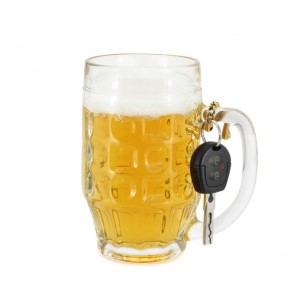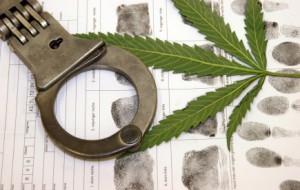 Ohio Gov. John Kasich signed legislation last month that banned the sale of powdered alcohol, making it the 15th state in the nation to do so despite federal approval earlier this year. Ohio Gov. John Kasich signed legislation last month that banned the sale of powdered alcohol, making it the 15th state in the nation to do so despite federal approval earlier this year.
The substance, known as Palcohol, is a powdered substance that can be added to liquid drinks to make them alcoholic. Because of its similarity to powdered caffeine, lawmakers included the substance in a bill originally designed to ban the powdered caffeine, according to the Columbus Dispatch.
The bill to ban powdered caffeine was drafted after an 18-year-old Ohio man died in May 2014. He ingested a large amount of the substance, which some consider to be highly dangerous. According to the article, a teaspoon of the substance is equal to the amount of caffeine in 25 cups of coffee.
The new law will make it a misdemeanor offense to sell products consisting solely or primarily of caffeine that is manufactured into a crystalline, liquid or powdered form. The second offense would be considered a third-degree misdemeanor.
Lawmakers argued minors easily could obtain and consume the powered substances, specifically the powered alcohol. This could lead to more reports of underage drinking and juvenile drunk driving offenses.
Additionally, lawmakers in favor of the ban argued the powered substance could make it difficult to determine what amount is safe to consume. For instance, if a person consumes a beer with a clear alcohol content label, he or she could determine a safe amount.
The powdered substance, however, could make it difficult to determine the actual alcohol level in a beverage. This presents a serious danger to those consuming the drinks, especially if he or she gets behind the wheel. The penalties could be much worse for an underage DUI.
In Ohio, the legal limit regarding a DUI for a driver younger than 21 years old is a blood or breath alcohol concentration of 0.02. This is a quarter of the legal limit for drivers who are of legal drinking age in The Buckeye State.
When an underage driver is pulled over with a BAC more than 0.02, he or she will be charged with Operating a Vehicle After Under Age Consumption. An OVUAC charge could be considered a fourth-degree misdemeanor and could be punishable by a class 6 driver’s license suspension.
Other penalties associated with an underage DUI charge in Ohio could include:
- Thirty days of jail time or probation;
- A $250 fine;
- A drivers license suspension between 90 days and two years;
- A court-mandated alcohol treatment program; and
- A remedial driving instruction course.
For a second OVUAC conviction, the fine could be increased to $500, the jail sentence to 60 days and the license suspension to five years. If an underage driver has a BAC more than 0.08, he or she could face even stronger penalties.
If you or a loved one faces charges for DUI under the age of 21 in Columbus, Ohio, or the surrounding areas, contact Joslyn Law Firm. Our attorneys understand the complexities of DUI cases, and they can work with you to ensure your rights are represented. Call (614) 444-1900 o schedule a free consultation today. Begin protecting your future immediately.
 ComFest is one of the largest organized annual events in Columbus, and each year it serves as one of the busiest times for local and state law enforcement agencies in the area. ComFest is one of the largest organized annual events in Columbus, and each year it serves as one of the busiest times for local and state law enforcement agencies in the area.
The festival, held at Goodale Park in the Victorian Village area, is aimed at gathering the community for a weekend of musical performances, entertainment, food and drinks, art and other festivities. Hundreds of people volunteer each year, helping the festival thrive since 1972.
This large gathering of people often leads to several arrests. Law enforcement officers take an active role in ensuring the festival is safe and those in attendance obey the laws. In previous years, the festival has been closed early because of rowdy festival goers.
Local law enforcement agencies have undercover officers in the crowd at the event searching for those committing various crimes, including underage drinking, open container, drug trafficking, drug possession, possession of drug paraphernalia, disorderly conduct, assault and more.
Agencies also schedule drunk driving checkpoints near the festival to catch those who consume alcohol and get behind the wheel. These checkpoints can lead to a plethora of types of OVI arrests, all of which can carry steep consequences.
In Ohio, a first offense OVI is first-degree misdemeanor, which is punishable by a minimum of three days in jail and a maximum of 180 days in jail, fines up to $1,075 or both. A second offense within six years could be punishable by between 10 and 180 days in jail, $300 to $1,500 in fines and a driver’s license suspension between one and five years.
A third DUI offense would be considered much more serious in Ohio. Depending on the situation, this could result in two or more years of an administrative license suspension, between two and 10 years of a court-issued license suspension, lengthy jail sentences, up to $2,750 in fines and a mandatory treatment program.
The penalties for an OVI offense can change depending on several factors, including the driver’s level of intoxication. If the results of a chemical test indicate an alcohol level of 0.17 or above, the penalties could be enhanced. This could mean longer jail time, expensive fines and an extensive driver’s license suspension.
Drugged driving also is serious offense, and drivers could be targeted during ComFest. These checkpoints are used to catch drivers who may be under the influence of certain prescription drugs or illegal narcotics, including marijuana. The penalties would be the same as an OVI charge.
This event has a huge police presence, and visitors should be careful coming and going from this event. If festival goers are arrested for an offense, it is important to remember your rights, including the right to an attorney. Call Joslyn Law Firm at (614) 444-1900 to schedule a consultation with dedicated and experienced legal counsel and begin fighting the charges today.
 Thousands of people have been pouring into Ohio this week for the Memorial Tournament in Dublin, and the onslaught of people could mean more drivers getting behind the wheel while under the influence. Thousands of people have been pouring into Ohio this week for the Memorial Tournament in Dublin, and the onslaught of people could mean more drivers getting behind the wheel while under the influence.
The event, which concludes this Sunday after one week of play, is a PGA Tour golf tournament played on a golf course within Muirfield Village Golf Club. The tournament was founded nearly 40 years ago, and since then has been a significant attraction for the community.
Now, the event is known for more than just its grueling course. In addition to the tournament itself, there are several other activities, including a benefit concert and multiple hospitality suites and air-conditioned tents with full-service bars.
This week-long party atmosphere sometimes can lead to attendees drinking alcohol and getting behind the wheel. In Ohio, a person can be charged with an OVI offense if he or she is found to be under the influence of alcohol, a controlled substance or a combination of substances.
Chemical tests often are used to detect a person’s level of intoxication. If a person is found to have a concentration of 0.08 or greater in his or her blood, breath or urine, he or she could face DUI charges. If the intoxication level is greater than 0.17, penalties for the offense could be much worse.
The penalties associated with a DUI offense are largely determined by the alleged offender’s previous criminal record, the person’s level of intoxication and if there are any aggravating factors present, such as injury or property damage.
A first DUI offense without aggravating factors could be considered a first-degree misdemeanor. This could carry up to 180 days in jail, a fine up to $1,075 or both. The accused would be required to serve a three-day jail sentence. Additionally, a person could be sentenced to an intervention program and have his or her license suspected.
If a person is accused of a second DUI offense, the consequences could be much more severe. This could include a 10-day mandatory jail sentence, up to 180 days in jail, fines between $300 and $1,500 and a driver’s license suspension between one year and five years.
A third offense could carry serious penalties, including an administrative license suspension of two years or more, between two to 10 years of a court-issued license suspension, a mandatory treatment program, fines between $850 and $2,750 and up to 60 days minimum jail term.
For offenders who live out of state, the ordeal of facing criminal charges could be much more difficult. This could be an extensive struggle, one that affects both your time and money. For instance, a person — no matter where they live — could be required to appear in court within 10 days of a DUI arrest.
If an out-of-state offender is not represented by a defense lawyer, he or she you must attend all court dates thereafter in person. However, if the person has experienced legal counsel, an out-of-state offender may have his attorney appear on his or her behalf.
If you are an Ohio resident or a out-of-state visitor here for the Memorial Tournament facing OVI charges, having an experienced DUI lawyer licensed to practice in Ohio is critical to your defense. The attorneys at Joslyn Law Firm are proactive, aggressive and focused on providing legal representation that is both productive and comprehensive. Call (614) 444-1900 to schedule a free consultation and learn more about how you can fight DUI charges.
 The alcohol limit of beer made and sold in Ohio could increase from 12 to 21 percent if a proposed bill makes its way through the Legislature this session. The alcohol limit of beer made and sold in Ohio could increase from 12 to 21 percent if a proposed bill makes its way through the Legislature this session.
State Rep. Dan Ramos has been the driving force behind the change. He originally introduced the idea into legislation in 2011. After it failed, he proposed it again in 2013 before creating what now is known as House Bill 68, according to Cleveland.com.
If the bill passes, breweries would be able to manufacture beer with an alcohol by volume content up to 21 percent and sell and distribute any beer with an alcohol percentage up to the maximum. The nearly 130 breweries in Ohio currently cannot exceed a 12 percent alcohol by volume content.
Beers with higher alcohol volumes are manufactured and sold in several of Ohio’s bordering states. In fact, Kentucky, Michigan and Pennsylvania do not have a limit on the alcohol content of beer, although some have restrictions on ciders.
When drinking these high-volume beers, it is important to remember they may affect your body differently than a beer with only 5 percent alcohol. In other words, you could become intoxicated faster and it could take fewer of these beers to put you over the legal limit.
In Ohio, drivers could be charged with an OVI if they are under the influence of alcohol and have a blood alcohol concentration of 0.08 to 0.17 while operating or driving a motor vehicle, according to Ohio Revised Code §4511.19.
These drunk driving charges always should be taken seriously. A first DUI charge in Ohio likely would be a misdemeanor of the first degree. This could carry up to 180 days in jail, fines up to $1,075 or both. Additionally, a conviction could have a serious impact on subsequent charges.
However, if a person is found to be significantly over the legal limit, the punishments could be much more severe. If a driver has an alcohol level of .17 or above, or .238 (two hundred thirty-eight thousandths) or above in the urine, he or she may be arrested for a high test DUI.
According to Ohio Revised Code §4511.19, a high test DUI could charge could mean up to six months in jail. This also could include a fine between $375 and $1,075. Even after the jail time and fines, drivers could face penalties associated with their driver’s license.
The court could order a driver’s license suspended for a period ranging from six months to three years. An ignition interlock device also could be required. This device would be installed in the driver’s car and it would prevent the vehicle from starting without a clean breath sample.
No matter the offense, a DUI charge always should be handled immediately. The consequences of a conviction could outlast the court-issued punishments. Having an experienced DUI defense lawyer could make the difference in your case. Call Brian Joslyn of Joslyn Law Firm at 614-444-1900 to learn more about fighting DUI charges.
 A new device that would allow law enforcement officers to determine if a driver is under the influence of marijuana soon could be developed based on a prototype created by two University of Akron students. A new device that would allow law enforcement officers to determine if a driver is under the influence of marijuana soon could be developed based on a prototype created by two University of Akron students.
Mariam Crow and Kathleen Stitzlein, graduate students in biomedical engineering, won a $10,000 inventors’ award for developing the sensor that could determine if a person is intoxicated by marijuana within minutes of the test, according to Cleveland.com.
The device, currently called the Cannibuster, uses saliva testing and lab-on-chip technology to determine the concentration of the chemical in the bloodstream. According to the creators, this could essentially provide police with a quick, accurate result.
The students, according to the university, hope to eventually market the small roadside testing device to law enforcement agencies in states where marijuana already has been legalized. Some of these states have set 5 nanograms or less of THC, the active ingredient in marijuana, as the legal limit for drivers.
However, the technology to accurately measure levels of the chemical on the roadside currently does not exist and processing test results could take weeks. Officers rely on the use of Drug Recognition Experts to determine if the driver is impaired, but the level of impairment still could be debated.
According to Ohio Rev. Code § 4511.19, if a driver “has a concentration of marihuana in the person’s whole blood or blood serum or plasma of at least two nanograms of marihuana per milliliter of the person’s whole blood or blood serum or plasma,” he or she could be considered impaired.
Currently officers use several factors to determine if a person could have used drugs, such as blood shot eyes, slurred or nonsensical speech, difficulty standing or walking and delayed reactions. If marijuana use is suspected, officers can ask the driver to submit to a chemical test.
If a test reveals an illegal amount of marijuana in the offender’s system, he or she could be charged with an OVI offense the same way a drunk driver would be. The offense sometimes is referred to as “drugged driving,” and it should be taken seriously.
The potential consequences of a marijuana DUI offense vary depending on the driver’s prior record. The charge typically is a first-degree misdemeanor for a first offense. This could mean a minimum of 72 hours in jail that can be extended up to 180 days, a fine of up to $1,075 and a mark on the person’s record.
However, the court also could compel the offender to take part in an intervention program in lieu of prison time or in addition to it. These combined times cannot exceed 6 months. If a person is arrested for a second OVI offense — whether intoxicated by alcohol, marijuana or drugs — the penalties could increase.
When a person is convicted of an OVI with marijuana charge, he or she could face consequences in all aspects of life. For instance, a conviction could mean temporarily losing the right to drive, which could affect your ability to work. Additionally, auto insurance rates could increase or a driver could be dropped from his or her policy.
The best way to avoid the hassles of an OVI is to avoid a conviction. These cases often are complex, and proving a driver is over the legal limit of marijuana use can be difficult. An experienced and skilled attorney at Joslyn Law Firm can fight on behalf of you. No matter the situation, they can help you strive to get a favorable outcome in your case.
Call a Columbus DUI defense attorney at Joslyn Law Firm at 614-444-1900. We can work one-on-one with you to ensure your rights are represented and your side of the case is presently eloquently and accurately. We work with clients throughout Central Ohio.
 More drivers throughout Ohio who are stopped for suspicion of drunk driving are refusing to submit to a chemical test, despite facing criminal and administrative repercussions. More drivers throughout Ohio who are stopped for suspicion of drunk driving are refusing to submit to a chemical test, despite facing criminal and administrative repercussions.
According to Ohio Bureau of Motor Vehicles data, nearly 83,000 Ohioans were under an administrative license suspension in 2013, the Telegraph-Forum reported. Of those thousands, 54 percent of the suspensions were for drivers who refused a breath test.
Ohio is one of many states that is considered an implied consent state. This means when a police officer stops a driver for suspicion of driving under the influence, he or she is expected to consent to a test of his or her blood, breath or urine to determine the level of intoxication, if any. This would apply to all drivers, whether or not they are residents of the state.
After an arrest for operating a vehicle under the influence of alcohol or controlled substances, or a DWI, the arresting officer is required to read a warning to the alleged offender under Ohio Rev. Code § 4511.192. This warning would explain the consequences of refusing to submit to chemical testing.
When a person refuses the test, his or her license will be administratively suspended immediately and he or she will be required to attend a hearing in court about the matter. This driver’s license suspension is done separately of the criminal charges that could be filed against a person. A suspension could last for up to one year, depending on the circumstances of the case.
In some instances, an administrative suspension could be longer, depending on several factors. For instance, the judge at the hearing could insist the suspension be extended. If a person refuses a chemical test more than once, he or she also could see increased penalties for subsequent refusals.
Additionally, the criminal offense of refusing to submit to a breath test also could carry a license suspension separate from the administrative penalties. The offense would be considered a misdemeanor of the first degree.
The data from the Ohio Bureau of Motor Vehicles also showed that 46 percent of the drivers who had their license suspended in 2013 were drivers who blew a positive breath test. This means even without a refusal, a person could face administrative penalties.
Administrative license suspension penalties for a positive test with a blood alcohol concentration greater than 0.08 percent within six years of a prior conviction could include:
- 1st Failed Chemical Test – 90 Day License Suspension – 15-day waiting period
- 2nd Failed Chemical Test– One Year License Suspension – 15-day waiting period
- 3rd Failed Chemical Test – Two Year License Suspension – 180-day waiting period
- 4th or Subsequent Failed Chemical Test – Three Year License Suspension – 3-year waiting period
Drivers have the right to appeal the administrative penalties associated with a DWI, or DUI. Drivers, however, must appeal the suspension within 30 days of the suspension notice with the Bureau of Motor Vehicles. This petition may be filed in the municipal or county court that has jurisdiction over the place where the arrest occurred.
A person could be granted an administrative hearing, which is separate of the criminal case, in which he or she could present evidence and examine witnesses to exhibit why driving privileges should not be suspended. A positive outcome in the hearing could mean having driving privileges reinstated.
If you have had your license suspended as a result of a DUI breath test refusal or you produced results over the legal limit, contact Columbus DUI defense attorney Brian Joslyn of Joslyn Law Firm. Our legal team is experienced in fighting both administrative and criminal penalties associated with DUI charges. We can help you regain your driving privileges. Call (614) 444-1900 to schedule a free initial consultation.
 Local Ohio organization Cop Block recently protested a planned drunk driving checkpoint in Washington Township in Montgomery County arguing the stops are unconstitutional. Local Ohio organization Cop Block recently protested a planned drunk driving checkpoint in Washington Township in Montgomery County arguing the stops are unconstitutional.
Members of the organization allegedly advised drivers to turn around and take an alternate route to avoid stopping at the police-organized checkpoint, according to ABC 22 News. The group allegedly did so because members believe the checkpoints are not in accordance with law.
DUI checkpoints, or OVI checkpoints, are police-planned stops in which law enforcement officers use cones and barricades to funnel traffic into an area in which drivers can be questioned. The vehicles are temporarily stopped in a specific sequence and drivers are checked for symptoms of being under the influence of alcohol or drugs.
DUI checkpoints and roadblocks are highly controversial and the actions often are debated around the country. Drivers wonder if the stops are legitimate, especially because law enforcement officers should have probable cause to stop a vehicle.
However, DUI checkpoints are considered legal in nearly 40 states, including Ohio. According to the ruling in Michigan v. Sitz, 496 U.S. 444, checkpoints are valid because the dangers of drunk driving outweigh the “degree of intrusion” involved in sobriety checkpoints. The ruling also said these checkpoints are an exception to the search and seizure provisions of the U.S. Constitution.
This does not mean officers have no procedure to follow while administering the checkpoints. There are requirements law enforcement agencies must follow when not only planning but administering the stops. For instance, a pattern of which vehicles to stop must be established prior to the checkpoint.
Additionally, police officers must have a strong reason to believe a person is impaired before they can stop the driver for an extended period of time. For example, if an officer smells alcohol or marijuana during the temporary stop, there is reasonable suspicion the person is impaired. The officer could ask the driver to pull over.
Then, the officers are expected to follow the same protocol he or she would during a routine traffic stop where the officer suspects the driver is impaired. A breath test likely would be administered, and an arrest could follow, depending on the results.
The advance planning of these checkpoints are crucial when ensuring they are carried out legally. For instance, it is a requirement that the checkpoints and roadblocks be published in advance. This could mean having the information in the local newspaper or even announced on radio stations, sometimes weeks in advance.
Although the stops are highly debated, drivers should remain cooperative during the checkpoints. This could make the situation easier and allow drivers to continue moving through the stop without issues. Rolling down windows and listening to law enforcement can help ease the hassle of the roadblock.
Also posted in Checkpoints, DUI
|
In a recent incident, a school bus driver in central Ohio has pleaded guilty to misdemeanor charges of drunken driving and endangering children. On November 25, a school bus was pulled over after several individuals reported erratic driving. The bus’s driver admitted to drinking alcohol before beginning her route, and an open container of whiskey was found in the bus. On checking her blood levels, her BAC was over twice the legal limit. Two children were on the bus during this incident, but neither were harmed. She is said to be entering an alcohol treatment program and she faces up to 6 months in prison at her sentencing hearing in February.
The Columbus Dispatch reports that the driver quit her job as a bus driver last week. This could be pre-empting the disciplinary actions she could face a result of this charge. A DUI charge can adversely impact the careers of many professionals, including bus drivers, lawyers, and law enforcement officers.
Apart from the potential for fines and jail time, a charge for a DUI-related offense can lead to disciplinary hearings, suspension of a professional license, and even the loss of a professional’s job. This can make a single offense have a huge impact on the life and career of the alleged offender. Many jobs, such as pilots, have requirements for arrested individuals to report their criminal charges within a certain time limit. The individual situations for each career type vary, but if you are a professional who has been charged with a DUI offense, a lawyer can help you determine what’s in store for your career as a result of these charges.
Some professions that can be impacted by a DUI charge include:
- Doctors
- Dentists
- Nurses
- EMTs
- Pilots
- Stock Brokers
- Lawyers
- Commercial Drivers
- Teachers
- Real estate agents
- Professional athletes
Because DUI convictions cannot be expunged from your record in Ohio, they can have a lasting effect of your future. When seeking to gain a certain professional license, including a CDL license, your traffic history and criminal background may be reviewed. A DUI in your past can easily influence your employment opportunities.
A DUI charge, officially known as OVI in Ohio, is always a serious matter, but when driving drunk causes the death of another person, the offense takes on another level of gravity. This was the case with Matthew Cordle of Ohio, whose sentencing was completed at the end of October this year.
After a night of heavy drinking on June 22, 2013, Cordle collided with another vehicle while traveling the wrong way on Interstate 670 and killed the driver of the other vehicle, Vincent Canzani. The case gained national attention when Cordle posted a video of himself confessing his crimes, which has received over 2 million views since then. In the video, Cordle described how he had been drinking at multiple bars before getting behind the wheel. At the end of his confession, he urged viewers not to drink and drive.
Cordle was sentenced to 6 ½ years in prison for charges of aggravated vehicular homicide and driving under the influence of alcohol, which, in his case, carried a potential maximum of 8½ years in prison. His driving privileges were also revoked for the rest of his life. Cordle had entered a guilty plea for the case, expediting his trial process to a matter of weeks.
Aggravated vehicular homicide consists of crimes in which the death of a person was caused by the offender’s reckless behavior while driving or if the offender was intoxicated while driving. It is also important to note that the death of an unborn child is also considered a separate act of homicide.
Ohio Rev. Code §2903.06 outlines the specific penalties faced by an offender accused of aggravated vehicular homicide. The potential consequences vary greatly depending on factors such as an offender’s prior traffic offense history, and if the driver’s privileges were suspended at the time.
For a first-time offender, they face a third degree felony with consequences of 1-5 years in prison, up to $10,000 in fines, and a driver’s license suspensions from 3 years to life. Jail time can go all the way up to 15 years in prison for an offender with multiple prior offenses.
A charge of vehicular homicide is a serious offense, and should not be taken lightly. Those facing this offense should seek out the help of an experienced DUI lawyer in order to protect their futures.
Since Ohio voters passed the 2009 amendment allowing casinos there have been a few changes to the major urban landscapes in the state – and their cultural counterparts. The first Ohio casino was the Horseshoe Casino in Cleveland, followed by Hollywood Casino of Toledo. The Horseshoe Casino of Cincinnati is scheduled to open in 2013. There are those that favor casino development for their economic benefits as well as those who oppose the idea because of alleged associated increased crime rates. One of the hot-button topics is whether casinos will increase the crime rate for Ohio DUI and other alcohol- and drug-related offenses in the immediate and surrounding areas.
This year, Columbus got in the game with its first racino at Scioto Downs in June and its first Vegas-style establishment Hollywood Casino, which opened just this past October. Both casinos offer various opportunities for gambling, entertainment, and alcoholic beverage consumption. So what does this mean for the DUI rate in Franklin County and the surrounding areas? More specifically, what does it mean for you, a potential casino patron?
In 2010, the Journal of Health Economics released a study entitled “The Impact of Casinos on Fatal Alcohol-Related Traffic Accidents in the United States.” The study indicates that in urban areas, casinos actually reduce the rate of DUIs, while the rate for suburban and rural areas increases. The authors surmise that for urban areas the decrease in driving distance, availability of public transportation, and substitution of gambling for bar-hopping accounts for the decreased rate, while the rate jump in more sparsely-populated areas is caused by the increase in distance driven by alcohol-impaired drivers.
Even though the study seems to indicate the relative safety of the Columbus urban areas with regards to DUI, the responsibility is ultimately up to you. If you live in the urban area and decide to visit the casino, make sure you are prepared to use public transportation or are accompanied by a designated driver. If you are visiting the casino from one of the outlying areas of Columbus, always make sure you are with another person who either cannot or will not drink. Remember, the atmosphere and drink specials at a casino bar are designed to get you to drink and spend more money. Making these arrangements ahead of time will ensure your protection from a Columbus DUI arrest at Hollywood Casino or Scioto Downs racino should you give in to temptation.
An Ohio DUI (aka OVI) arrest is no joke. Even with a first-time offense, if your alcohol level is above .08 (.04 for commercial drivers), you could face a fine, jail time, license suspension, and cultural repercussions of having a misdemeanor on your criminal record. Additionally, the tight security at Hollywood Casino Columbus and Scioto Downs racino will supply more concrete evidence against you, further impeding your defense. Don’t face the stress of a DUI charge. If you plan to visit a Columbus casino – be smart. Take a designated driver and be prepared. If you’ve already been arrested for a DUI, whether it involved a casino or not, it is a great idea to hire an experienced Columbus DUI lawyer as soon as possible.
|
 Ohio Gov. John Kasich signed legislation last month that banned the sale of powdered alcohol, making it the 15th state in the nation to do so despite federal approval earlier this year.
Ohio Gov. John Kasich signed legislation last month that banned the sale of powdered alcohol, making it the 15th state in the nation to do so despite federal approval earlier this year.
 ComFest is one of the largest organized annual events in Columbus, and each year it serves as one of the busiest times for local and state law enforcement agencies in the area.
ComFest is one of the largest organized annual events in Columbus, and each year it serves as one of the busiest times for local and state law enforcement agencies in the area. Thousands of people have been pouring into Ohio this week for the Memorial Tournament in Dublin, and the onslaught of people could mean more drivers getting behind the wheel while under the influence.
Thousands of people have been pouring into Ohio this week for the Memorial Tournament in Dublin, and the onslaught of people could mean more drivers getting behind the wheel while under the influence. The alcohol limit of beer made and sold in Ohio could increase from 12 to 21 percent if a proposed bill makes its way through the Legislature this session.
The alcohol limit of beer made and sold in Ohio could increase from 12 to 21 percent if a proposed bill makes its way through the Legislature this session. A new device that would allow law enforcement officers to determine if a driver is under the influence of marijuana soon could be developed based on a prototype created by two University of Akron students.
A new device that would allow law enforcement officers to determine if a driver is under the influence of marijuana soon could be developed based on a prototype created by two University of Akron students. More drivers throughout Ohio who are stopped for suspicion of drunk driving are refusing to submit to a chemical test, despite facing criminal and administrative repercussions.
More drivers throughout Ohio who are stopped for suspicion of drunk driving are refusing to submit to a chemical test, despite facing criminal and administrative repercussions. Local Ohio organization Cop Block recently protested a planned drunk driving checkpoint in Washington Township in Montgomery County arguing the stops are unconstitutional.
Local Ohio organization Cop Block recently protested a planned drunk driving checkpoint in Washington Township in Montgomery County arguing the stops are unconstitutional.

